Many of us have been in this situation. Just picture it. You’re at the farmer’s market and armed with knowledge of the health benefits of mushrooms, you spot a stand where they’re being sold. You eagerly purchase a ton because you’re so excited. Turns out, you end up buying more than you can consume in a week, and a few days later, you’re scrambling to find a way to make sure all your mushrooms don’t go to waste.
This is where knowing how to properly store and preserve mushrooms comes in handy. Thankfully, you’ve come to the right place. Whether it’s storing mushrooms in the refrigerator, drying them for longer-term storage, or freezing them, we’ve got you covered in this guide.
Before we dive in, let's answer an FAQ:
What kind of mushrooms does this guide apply to?
Some mushrooms just naturally store longer than others. But this guide applies to all mushroom types including medicinal, functional, gourmet, and magic mushrooms.
How long do fresh mushrooms last
Fresh, raw mushrooms will last about 5 to 7 days in the refrigerator, but there are several things that can affect their lifespan.
Slicing them can shorten their lifespan while cooking or storing them in a paper bag can actually increase their shelf-life.
How to clean mushrooms before storage
Depending on the sourcing of your mushrooms, cleaning before storage can be important.
However, the cleaning technique is critical, as too much moisture can compromise the quality of a mushroom and lead to a slimy or moldy mushroom.
PRO TIP: Do not rinse your mushrooms with water!
Instead of dunking your mushrooms in a bath of water, try using a damp paper towel or a veggie brush (like an old toothbrush) to gently wipe and clean any dirt or debris. If mushrooms are a big part of your life, consider investing in an inexpensive mushroom brush like this one from Amazon.
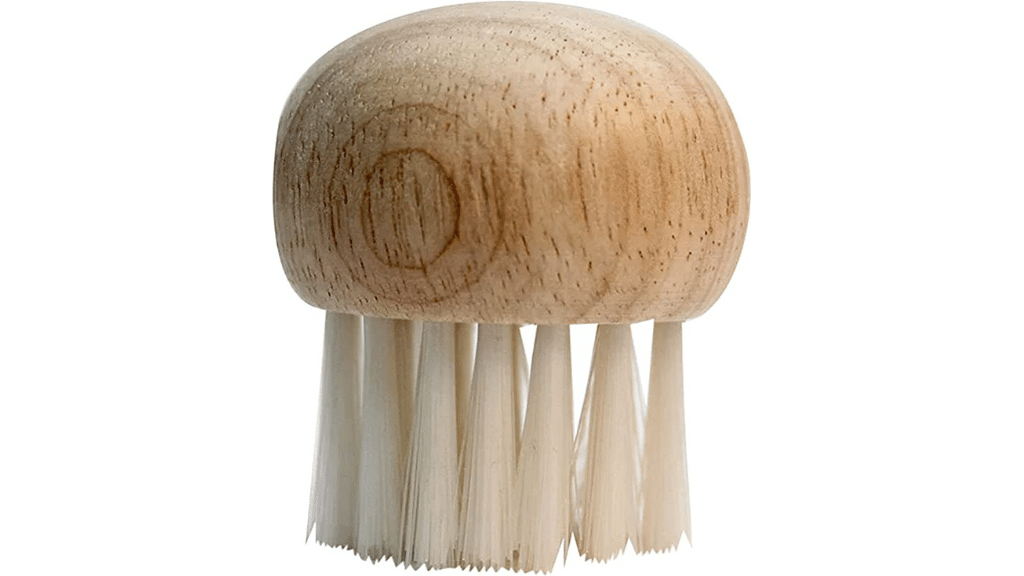
What should I do if my mushrooms are really damp?
If you read this too late and already soaked your mushrooms, it might be a good idea to use those mushrooms today. It's critical that you don't store your mushrooms long-term if they're damp.
If there's simply no way you're going to use them today, consider dehydrating them for long-term storage using a dehydrator or one of these other methods. Worst case, you can very gently squeeze your mushrooms between paper towels to try and absorb some of the moisture.
Either way, it's safe to say that very wet mushrooms will store for at least half the time as drier mushrooms.
How long do fresh mushrooms last in the fridge?
On average, any mushroom will last in the fridge from 7 to 10 days. However, a mushroom’s shelf-life in the fridge will vary on how they’re prepared.
Here’s a breakdown:
- Whole mushrooms: last up to 2 weeks in the refrigerator, but it is best to consume them before 10 days in the fridge.
- Pre-sliced mushrooms: last up to about a week in the refrigerator, but best to consume before 5 days.
- Cooked or sautéed mushrooms: last from 7 to 10 days, but may expire sooner if they’re cooked with ingredients that go bad sooner.
- Marinated mushrooms: last from 10 to 14 days in the fridge.
- Dehydrated mushrooms: last up to a year, but it's not always necessary to store them in the fridge. For more on dehydrating mushrooms for long-term storage, check out this guide.
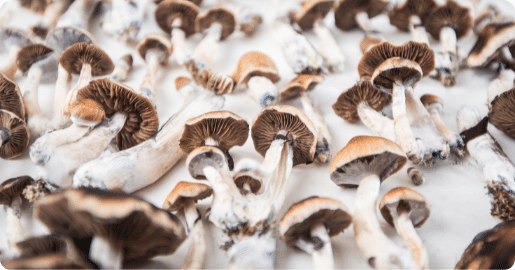
How to store mushrooms in the refrigerator
Although there are several ways to store mushrooms in the refrigerator, there are some universal rules to follow regardless of the method you choose. Mushrooms act like sponges and absorb moisture, smells, and flavors easily. That being said, here’s what you should not do when storing them.
Tips for storing mushrooms in the fridge:
- Do not store your mushrooms in the crisper drawer. This leaves your mushrooms vulnerable to excess moisture, which can be detrimental to them.
- Avoid placing mushrooms near foods with strong aromas, as they will absorb them.
- Do not stack food on them, as it will squish them and make them mushy and unappetizing.
Here are some of the most common methods to store mushrooms in your refrigerator:
- Paper bag: Generally one of the most favored methods of storing mushrooms, this method does a fantastic job of keeping moisture away from your mushrooms and maximizing their shelf-life in the refrigerator. According to a small home experiment, the most effective method for long-term storage of mushrooms is to line a paper bag with a paper towel and then place the. mushrooms inside.
- Original store packaging: This is the simplest method, and you can take your mushrooms straight from your grocery bag and pop them into the refrigerator. This method however will not be the best at prolonging your mushroom’s life in the fridge, but does a decent job if you intend to use your mushrooms in the next few days.
- Loose in a bowl: Clean your mushrooms and place them in a bowl with paper towels. This method allows you to easily check on their freshness and works best when using a glass bowl.
Want to know how these and even more mushroom storage methods stack up against each other?
Read on below to see how long mushrooms will last using each of these storing methods and choose which is best for you.
The best mushroom fridge storage methods
Not all mushroom storage methods are equal. Kitchn’s article comparing mushroom storing methods is comprehensive and shows you the best and the worst ways to store your mushrooms.
According to this experiment, the best mushroom storage method for maximum freshness is a paper bag lined with a folded paper towel. Place the mushrooms on top of the paper towel and loosely close the paper bag.
We break down their findings complete with a rating for each method in the table below:
|
Storage Method |
Rating |
About this Method |
Results |
Takeaway |
|
Plastic Bag with Paper Towels |
1 out of 10 |
Wrap mushrooms in paper towels to trap moisture and place in an open plastic bag to allow for ventilation. |
After 10 days, all mushrooms were slimy and 4 were discolored. |
This storage method tends to trap moisture and after 6 days in the fridge the mushrooms’ quality started to deteriorate. |
|
Bowl with Plastic Wrap |
3 out of 10 |
Place mushrooms in a large glass bowl to prevent crowding. Cover the bowl with plastic wrap and poke holes for ventilation. |
After 10 days, half of the mushrooms had a thin layer of slime and 2 of the mushrooms turned much darker than the rest of the batch. |
This test suggests that plastic film does not do an adequate job of preserving mushroom quality. |
|
Original Container |
3 out of 10 |
Put the package of mushrooms into your refrigerator. |
After 10 days, the mushrooms still look the same. Four of the mushrooms did have a thin layer of slime and one mushroom had mold. |
This method is generally good if you need to store your mushrooms for 5 days or less, as it takes little work.If you need to store longer, consider a different method to prolong shelf life. |
|
Bowl with Paper Towels |
6 out of 10 |
Line a large glass bowl with paper towels. Spread the mushrooms and then cover them with another paper towel. |
After 10 days, half had spots and two of the mushrooms were slimy. |
This method allows you to easily check on their freshness. |
|
Paper Bag |
6 out of 10 |
Simply transfer your mushrooms into a paper bag and place them in the refrigerator. |
After 10 days all mushrooms were dry but slightly wrinkly. Four of the mushrooms had dark spots but none had odor. |
This method is great at keeping moisture away and “tired looking” mushrooms like the wrinkly ones described tend to boast richer flavors much like dried mushrooms. |
|
Paper Bag with Paper Towels |
7 out of 10 |
Line a paper bag with a folded paper towel piece and place mushrooms on top. |
After 10 days, no slimy mushrooms. Three mushrooms were slightly darker and the rest tan. Three also had some wrinkles. |
The mushrooms fared even better than the mushrooms in just the paper bag alone. No slimy ‘shrooms! |
How to store dried mushrooms
Drying your mushrooms is an excellent way to preserve your mushrooms, whether for gourmet or medicinal use, and maximize their shelf-life. However, you’ll want to make sure you store them properly or your mushrooms are at risk of growing mold or being vulnerable to bug infestations.
There are many methods to dry mushrooms, but no matter which way you prefer to dry them, the best way to store your dried mushrooms is in an airtight container. Doing so will prevent moisture from seeping back in and rehydrating them. You’ll also want to keep them in a cool, dark place to maintain the mushroom’s flavor.
Top methods for storing dried mushrooms
There are three main methods to storing dried mushrooms. They work great whether you're storing whole, sliced, or powdered mushrooms - as long as they've been properly dehydrated.
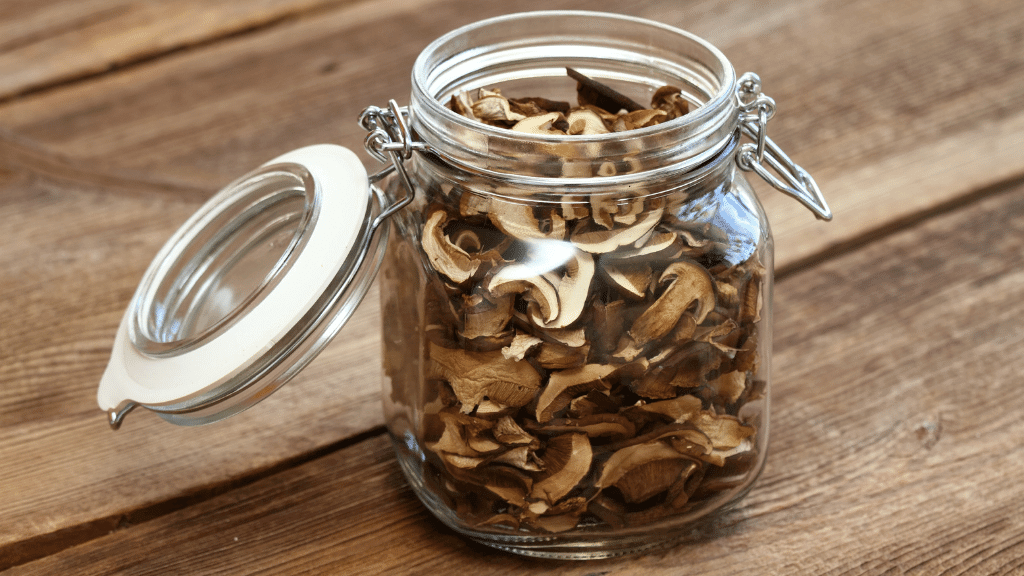
1. Glass jars
Glass jars are often preferred, and are the best long-term storage containers, because they keep an airtight seal and allow you to see your mushrooms. Mason jars are a popular storage option for dried mushrooms.
2. Stainless steel containers
Stainless steel containers offer excellent humidity control and can improve the mushroom’s smell and flavor. Recycling containers from other products are a great option here. Or use a stainless steel drinking bottle.
3. Vacuum sealed containers
Vacuum seal your mushrooms from oxygen to minimize any elements that can degrade their quality. It should be noted that this option can be expensive. They usually require a vacuum sealer.
How long do dried mushrooms last?
Dried mushrooms can last indefinitely if stored properly in an airtight container and in a cool, dry place.
Properly stored magic mushrooms, or psilocybin mushrooms, will retain their psychoactive properties for up to 2 years. After 2 years, they lose their “magic.”
How to freeze mushrooms for storage
Raw mushrooms stored in the refrigerator have a notoriously short shelf-life. Freezing mushrooms, like many other long-term food storage methods, can increase a mushroom’s shelf-life and prevent food waste. Not to mention, it allows you to stock up on all your favorite varieties and use them when you want them.
First, you may want to prepare your gourmet mushrooms by blanching or sautéing them first. This gives your mushrooms a more robust flavor and texture after freezing.
How to prepare gourmet mushroom for freezing
Many sources recommend blanching or steaming mushrooms before freezing them. That makes them more versatile for future cooking than raw frozen mushrooms.
How to blanch your mushrooms by steaming:
This method is ideal for any time you plan to add your mushrooms to soups, stews, broths, or any dish that is moisture heavy and you want to retain the original flavor of the mushroom itself.
- Slice your mushrooms into equal cuts. Try to think about how you plan to use them in the future in order to determine the proper slice size.
- Boil a pot of water
- Place your sliced mushrooms in a steamer basket and place over the pot of boiling water for about three minutes, or until the mushrooms reach your desired consistency. Whole or larger slices can take up to five minutes using this method.
- Plunge your mushrooms in a bowl filled with iced water for the same amount of time you cooked them for. Take the mushrooms out of the ice bath and pat dry gently with paper towels. Then follow the steps below to flash freeze them.
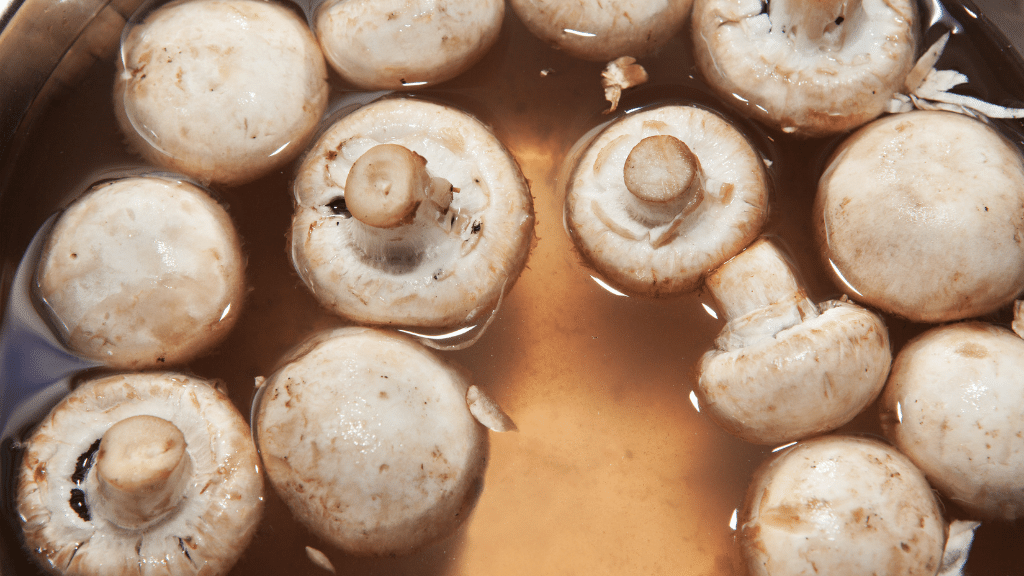
How to sauté your mushrooms before freezing:
This method is ideal for those who want to add their mushrooms directly to a future sauté dish, on top of pizzas, or other methods where you want the mushroom to have more flavor when added.
- Cut your mushrooms into to equal slices. Try to think about how you'll use them in a future dish to determine the proper size.
- Heat a pan to medium-high heat
- Add a pat of butter or oil to the pan
- Toss in your mushrooms and season to taste. Add more butter or oil as needed to reach your desired consistency
- Sauté in the pan for about 4-5 minutes, or until they're nearly cooked through. You don't want to cook them all the way, as you'll finish their cooking in your future dish. Keeping the flavor a bit more mild will allow you to adjust the flavor of your future dish.
- Plunge your mushrooms in ice water for the same amount of time as sauteeing. Take the mushrooms out and pat dry gently with paper towels. Then follow the steps below to flash freeze them.
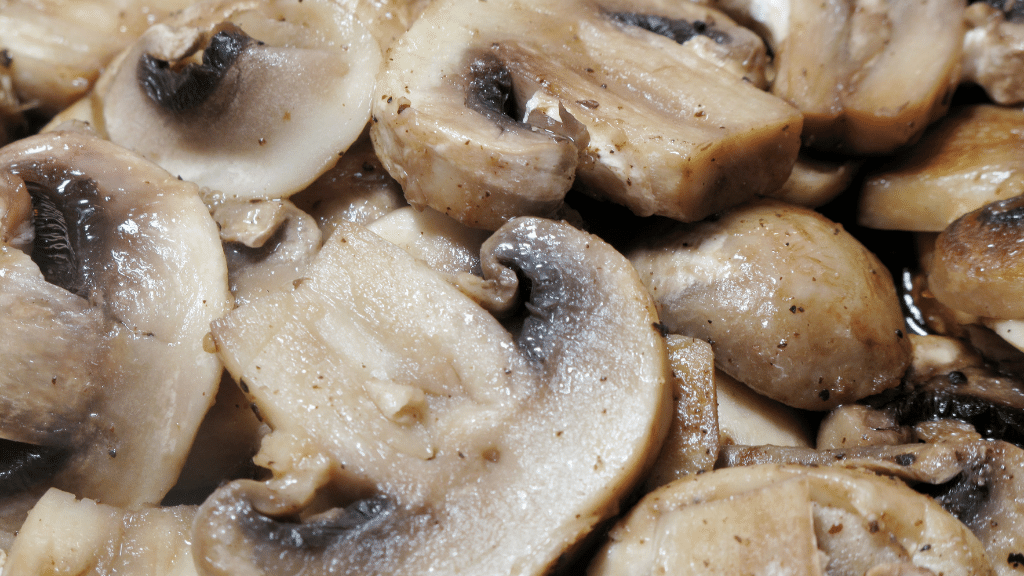
How to flash freeze your mushrooms for long-term storage
Flash freezing is a way for you to individually freeze your mushroom slices before storing in the freezer. This allows you to grab just a small handful for your dishes. If you freeze your mushrooms in a clump they'll freeze as a clump. Then they won't thaw evenly leading to a very messy and unusable dish.
First, flash freeze them after the cooked mushrooms have cooled. Using an ice bath can help to speed up the process.
- Pat mushrooms dry of any excess moisture using a paper towel.
- Spread the mushrooms evenly on a cookie sheet that's lined with parchment paper. Parchment paper makes it easy for your mushrooms to not stick to your pan. Make sure the mushrooms aren't quite touching each other.
- Freeze for 1-2 hours, or until completely frozen through.
- Remove your mushroom tray from the freezer. Then, carefully remove your mushrooms from the parchment paper and move them into a freezer-safe bag or in a container. Make sure you use a container that's big enough to leave some space. Your mushrooms will expand as they freeze. to make room for your mushrooms should they expand. Make sure your container is airtight and that you squeeze out any air to prevent freezer burn.
Mushrooms can be stored in the freezer in this way for up to a year.
How does freezing mushrooms affect their flavor and texture?
Freezing mushrooms is a great option if you plan to hide them in soups, stews, broths, or sauces. In other words, it's the ideal solution any time mushrooms won't be the feature of your dish. That's because freezing keeps much of the mushroom flavor, but you sacrifice some of the texture.
Freezing your mushrooms will tend to make them mushy. (Mushier than usual, anyway). Which is fine if they're going into a moisture-rich dish. But not so great if you're simply sautéing them as a side.
That's why it's important to consider how you plan to use your frozen mushrooms in the future. Sautéing or balancing them can help them keep some of their flavor and texture in the cooking process. Much more so than freezing raw sliced mushrooms.
But if you plan to use your mushrooms for non-gourmet methods, such as for tinctures, teas, powders, etc. then sautéing or blanching is not necessary.
Do you have to thaw mushrooms before using?
No, you do not have to thaw mushrooms before using. In fact, you shouldn’t to keep the quality of the mushrooms intact. Thawing will cause the mushrooms to release more water and become soggy. Thawing is only necessary if you plan to dry your mushrooms after removal.
Can I dry mushrooms after they've been frozen?
Yes! It will just take more time, as mushrooms will have retained a lot of moisture in the freezing process. Lay your mushrooms out on a towel or a layer of paper towels until they come to room temperature. Then, follow your preferred method to dry the mushrooms.
How long do frozen mushrooms last?
Properly stored frozen mushrooms can last 9 to 12 months, but flavor and quality diminishes beyond four months.
So there you have it! A complete step-by-step guide to store fresh mushrooms. We hope it helped! Ready to use your stored or dried mushrooms for medicinal use? Check out our complete guide on how to grind mushrooms for teas and tinctures.
Interested in the latest news on the mushroom industry, including legislation updates and education? Sign up for our newsletter to get this and more straight to your inbox!

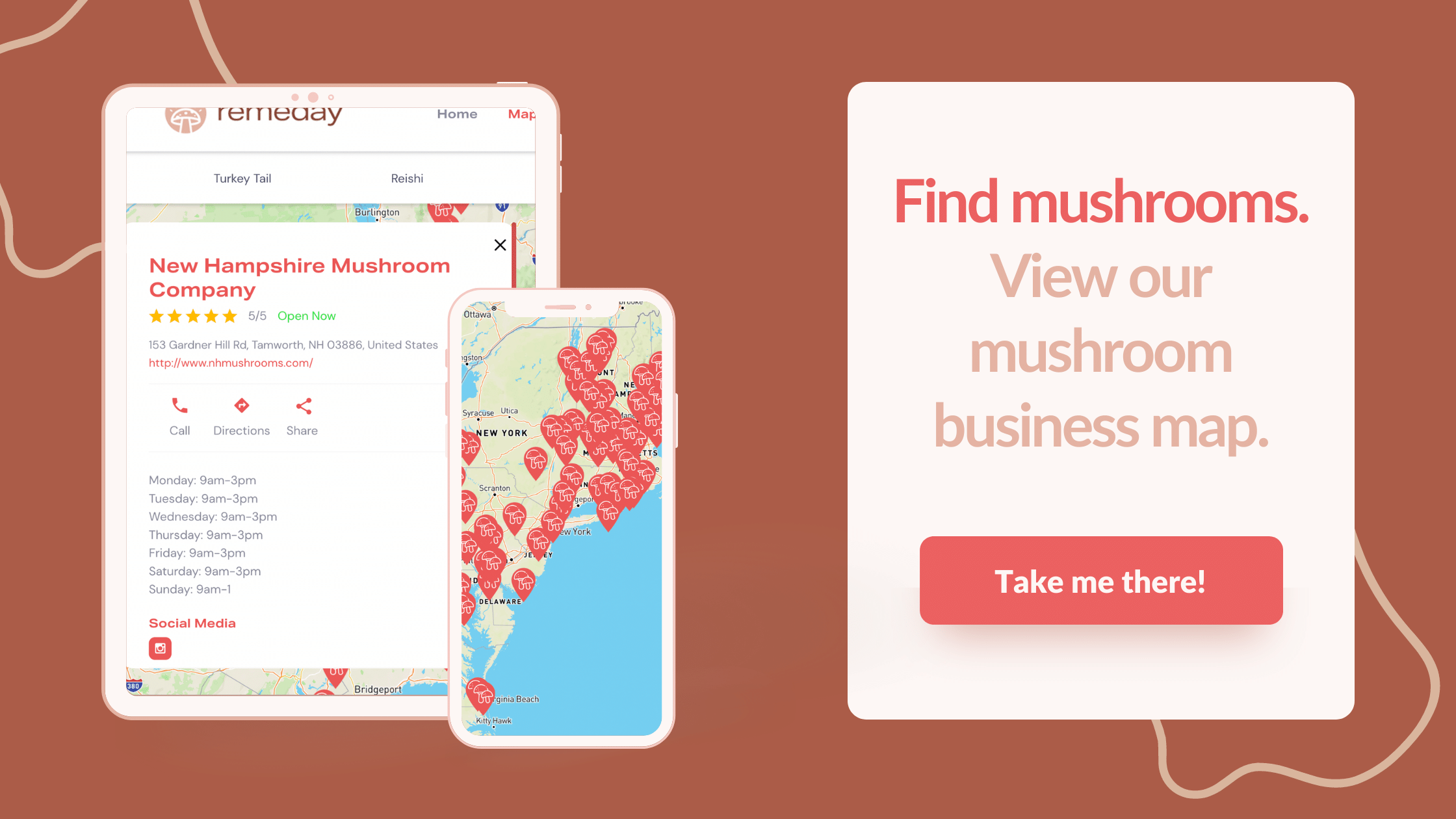
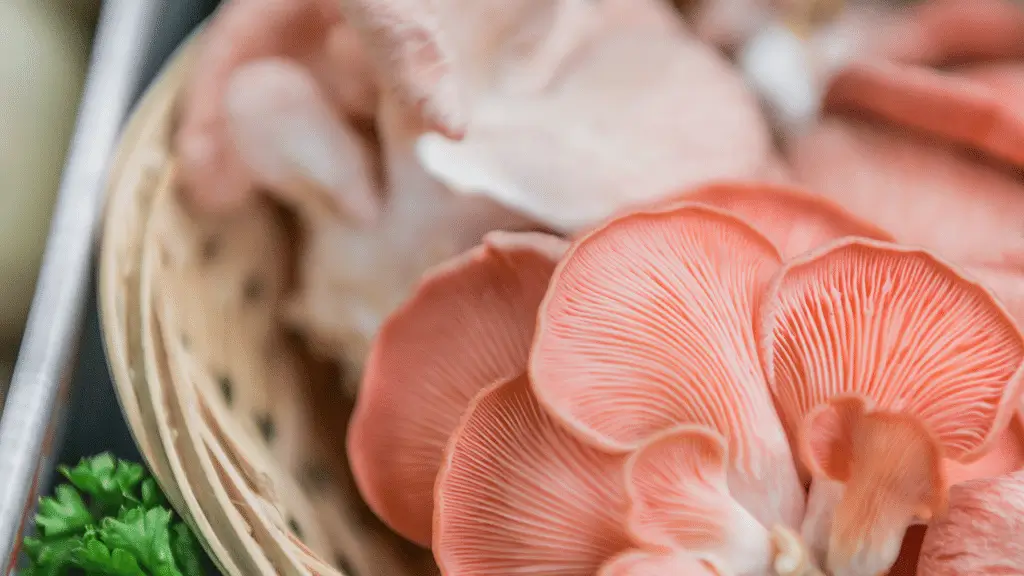
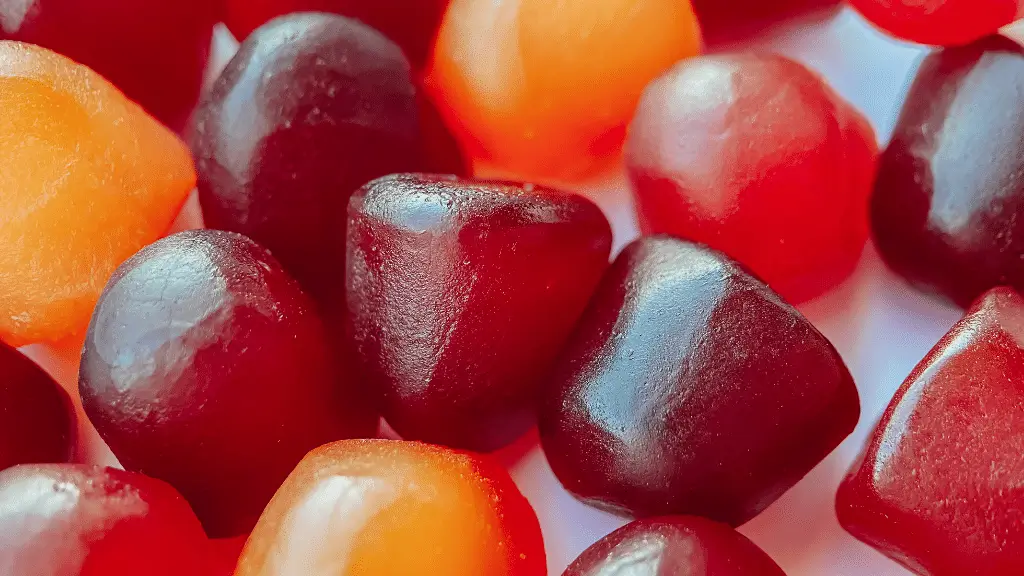


.png)
